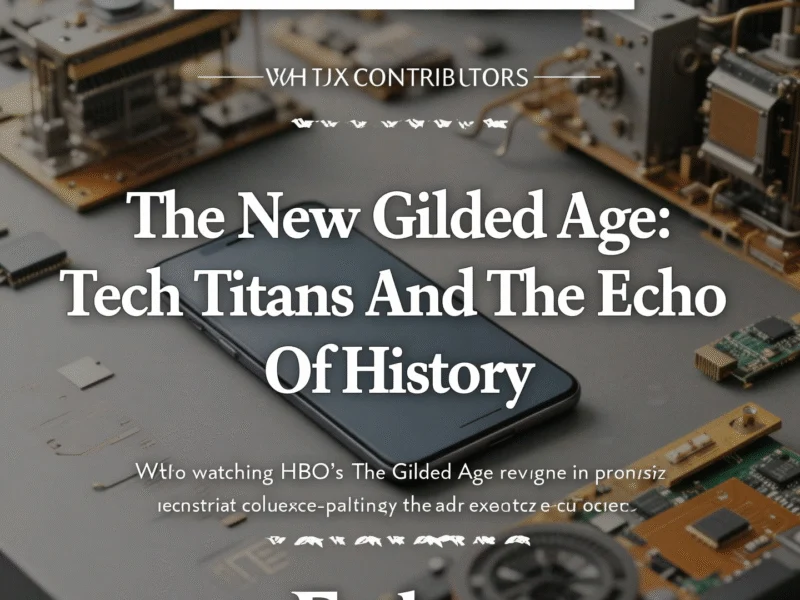The striking parallels between today’s technology billionaires and the industrial magnates of the original Gilded Age reveal a troubling pattern of wealth concentration, infrastructure control, and political influence that echoes across centuries. As we navigate the digital transformation reshaping our world, the comparison between these two eras of unprecedented technological advancement and economic disruption becomes increasingly relevant for understanding our current social and economic landscape.
The Industrial Revolution Foundations
The original Gilded Age emerged from the technological breakthroughs of the Industrial Revolution, which transformed society through innovations like rail transport and automated manufacturing. Between 1870-1890, these advancements created unprecedented wealth for industrial pioneers while fundamentally reshaping labor, commerce, and daily life. The era produced legendary business magnates like Carnegie and Rockefeller whose fortunes, while massive by contemporary standards, pale in comparison to today’s tech wealth when adjusted for modern economic scales.
Digital Infrastructure as Modern Railroads
Just as 19th century industrialists controlled the physical infrastructure of commerce through railroads and manufacturing, today’s tech leaders dominate the digital infrastructure that underpins modern society. Where previous generations depended on railroad monopolies to transport goods, contemporary businesses must navigate the dominance of major tech platforms to reach customers and conduct operations. This control extends to the massive data centers that power our digital world, creating new forms of infrastructure dependency that mirror historical patterns of economic concentration.
Worker Conditions Across Centuries
The human cost of technological progress reveals disturbing continuities between eras. Factory workers in the original Gilded Age faced hazardous conditions and poverty wages, while today’s digital economy creates its own challenges:
- Gig workers operating without traditional benefits or job security
- Warehouse employees managed by algorithmic systems that monitor productivity
- Content moderators experiencing significant mental health impacts from reviewing disturbing material
These modern workplace challenges occur alongside unprecedented wealth accumulation by tech companies, creating a disparity that echoes the original Gilded Age’s social divisions.
Environmental Impacts of Digital Infrastructure
The environmental footprint of today’s digital empire presents another parallel with industrial-era challenges. Where 19th century factories produced visible pollution, contemporary tech infrastructure creates less obvious but significant environmental strains. Data centers and water consumption have become increasingly concerning as digital demands grow, while the energy requirements of maintaining global digital networks represent a modern industrial-scale environmental impact. Industry experts note that the sustainability challenges of digital infrastructure require urgent attention as technology continues to expand its footprint.
Political Influence and Democratic Concerns
Perhaps the most troubling parallel lies in the political influence wielded by economic elites in both eras. The original Gilded Age saw industrial magnates directly influencing legislation and political outcomes, while today’s tech leaders exercise power through campaign funding, lobbying efforts, and control over the digital spaces where political discourse occurs. This concentration of influence raises fundamental questions about democratic integrity, particularly as recent analysis highlights the growing tension between governmental authority and tech industry power.
Navigating the New Gilded Age
Understanding these historical parallels provides crucial context for addressing contemporary challenges. The original Gilded Age eventually gave way to progressive reforms, antitrust actions, and new regulatory frameworks that balanced innovation with public interest. As we consider additional coverage of technological regulation and related analysis of economic concentration, the lessons from history suggest that similar recalibrations may be necessary to ensure that today’s technological advancements benefit society broadly rather than concentrating power and wealth excessively.
The echoes between these two transformative periods remind us that while technology evolves, fundamental questions about economic fairness, worker dignity, and democratic accountability remain persistently relevant across centuries of innovation and change.



